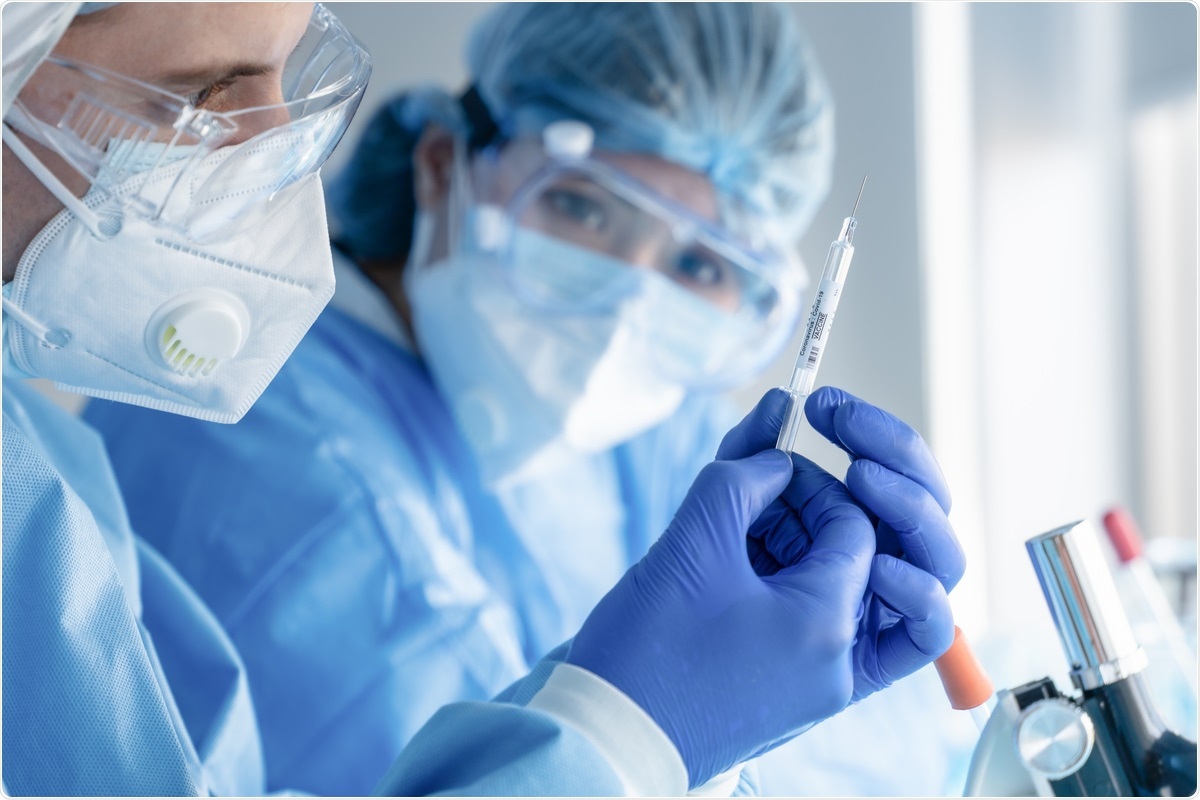The coronavirus disease (COVID-19) pandemic caused by severe acute respiratory syndrome coronavirus 2 (SARS-CoV-2) has created a need to develop novel broad-spectrum antivirals that are effective against the existing and evolving variants.
 Study: Effective SARS-CoV-2 antiviral activity of hyperbranched polylysine nanopolymers. Image Credit: Mongkolchon Akesin/ Shutterstock
Study: Effective SARS-CoV-2 antiviral activity of hyperbranched polylysine nanopolymers. Image Credit: Mongkolchon Akesin/ Shutterstock
Polylysines possess a high positive charge with a linear polymeric structure and have earlier been reported to inhibit replication of HIV-1 and influenza A viruses. The recently published study in the journal Nanoscale attempts to investigate the antiviral activity of hyperbranched polylysine nanopolymers against SARS-CoV-2.
Synthesis and structure of hyperbranched polylysine nanopolymers
Hyperbranched polymers (HP) are macromolecules that are highly branched and characterized by irregular structure and branching. HP synthesized from amino acids have better solubility, biocompatibility, and stability when compared to HP from other precursors.
In the present study, Hyperbranched polylysine nanoparticles (HPNs) were synthesized by thermal polymerization of L-lysine alone or in the presence of boric acid (H3BO3) as a catalyst. The nanopolymer synthesized using L-lysine and boric acid was used for performing the study.
The structure of the HPNs was then analyzed using FTIR in situ spectroscopy, which suggested that the HPNs are made of spherical nanoparticles with dimensions in the range of 200–300 nm and that they can be dispersed in water and Dimethyl sulfoxide (DMSO) solvent. UV–Vis absorption spectra of HPNs showed that they exhibit fluorescence properties which can be utilized to perform bioimaging studies to understand their interactions within the cell.
HPNs exhibit low cytotoxicity
The HPNs were assessed for cytotoxicity and their antiviral effect against SARS-CoV-2 using in vitro cell-based assays. Remedesivir, is the first antiviral drug approved by the Food and Drug Administration against SARS-CoV-2, was employed as the control drug in the present study.
Standard MTS cytotoxicity assay determines the toxic dose of substances by evaluating the viability of cells. It was used to assess the cytotoxicity of HPNs and determine their 50% cytotoxic concentration (CC50).
Vero E6 cells were exposed to increasing concentrations of HPNs or remdesivir, and the CC50 of HPNs was calculated to be > 500 μg mL-1, which was the highest dose tested, and CC50 of remdesivir was > 60 μg mL-1.
HPNs exhibited low cytotoxicity when compared to remdesivir. It was notable that remdesivir and HPNs produced a similar mean loss of cell viability; however, the highest dose at which remdesivir produced the effect was eight times less than that of HPNs.
HPNs exhibit effective antiviral activity
The antiviral activity of HPNs was tested by exposing the Vero E6 cells to various concentrations of HPNs or the control drug remdesivir and then infecting them with SARS-CoV-2.
The viral replication in these infected cells was then analyzed through quantification of SARS-CoV-2 nucleoprotein using ELISA.
Cytopathic effects (CPE) are changes in the structure of host cells due to virus infections. The appearance of detached cells due to virus-induced CPE was also assessed using light microscopy. The results showed that HPNs exhibited antiviral activity with a 50% inhibitory concentration (IC50) value of 125 μg mL-1 compared to the control remdesivir, which showed antiviral activity similar to earlier reports with an IC50 of 1.9 μg mL−1.
Upon examination of cell morphologies, it was found that HPNs had a protective effect against cytopathic damage at twice its IC50 concentration when shown to restore the cell monolayer of Vero E6 cells.
HPNs may produce antiviral effects at different stages of the SARS-CoV-2 life cycle
The antiviral activity of HPNs was assessed by performing a full-time treatment, pre-adsorption, and post-adsorption assays. The inhibition of SARS-CoV-2 replication was assessed by measuring the viral nucleocapsid protein levels using ELISA.
Full treatment resulted in complete inhibition of viral replication. Compared to the untreated controls, pre-adsorption treatment resulted in 26% inhibition in viral replication, and there was 72% inhibition post-adsorption treatment. HPNs may exhibit their antiviral activity by acting at different stages of the viral life cycle. It was also observed that HPNs did not show any cytotoxic effect on uninfected cells in all the three assays.
HPNs exhibit antiviral activity by penetrating the host cells
The study attempted to explore the possibility of HPNs exhibiting their antiviral activity during the viral post-entry phase by penetrating the host cells. The Vero E6 cells were incubated in growth media containing two different concentrations of HPNs for six and 24 hours, and the resulting fluorescence was measured using flow cytometry.
It was found that HPNs efficiently entered into the cells at both the time points studied, at concentrations that had earlier produced antiviral efficacy. A dose-dependent uptake of HPNs was also observed. Further localization of HPNs inside the cells was also confirmed by employing trypan blue counterstain to quench fluorescence outside of the cell membranes.
HPNs internalization inside the cells was also examined using confocal microscopy. Fluorescent green spots were observed in the cytoplasm of the Vero E6 cells that were incubated with 250 μg mL−1 of HPNs for 24 hrs. The presence of HPNs was not observed in the nuclei of the cells. Uptake of HPNs by Vero E6 cells may occur through endocytosis which needs to be investigated further.
Mechanisms of antiviral activity by HPNs
The mechanism of antiviral activity of HPNs may be due to their electrostatic interaction with viruses or their hyperbranched structure offering an advantage for interacting with spike proteins on SARS-CoV-2. It has already been found that polylysine molecules with high positive charge inhibit viral replication through their electrostatic interaction with viruses.
The findings from this study suggest that apart from exhibiting antiviral activity at the point of entry of the viruses into host cells, HPNs may also inhibit viral replication and budding as they can penetrate the host cells. They may exert their antiviral activity by acting at various phases of the SARS-CoV-2 life cycle.
- Stagi, L. et al. (2021) "Effective SARS-CoV-2 antiviral activity of hyperbranched polylysine nanopolymers", Nanoscale. doi: 10.1039/d1nr03745e.
Posted in: Medical Science News | Medical Research News | Disease/Infection News
Tags: Antiviral Drug, Assay, Catalyst, Cell, Confocal microscopy, Coronavirus, Coronavirus Disease COVID-19, Cytometry, Cytoplasm, Cytotoxicity, Efficacy, Flow Cytometry, Fluorescence, Food, HIV, HIV-1, in vitro, Influenza, Light Microscopy, Lysine, Macromolecules, Microscopy, Nanoparticles, Pandemic, Polymers, Protein, Remdesivir, Respiratory, SARS, SARS-CoV-2, Severe Acute Respiratory, Severe Acute Respiratory Syndrome, Spectroscopy, Syndrome, Trypan Blue, Virus

Written by
Dr. Maheswari Rajasekaran
Maheswari started her science career with an undergraduate degree in Pharmacy and later went on to complete a master’s degree in Biotechnology in India. She then pursued a Ph.D. at the University of Arkansas for Medical Sciences in the USA.
Source: Read Full Article